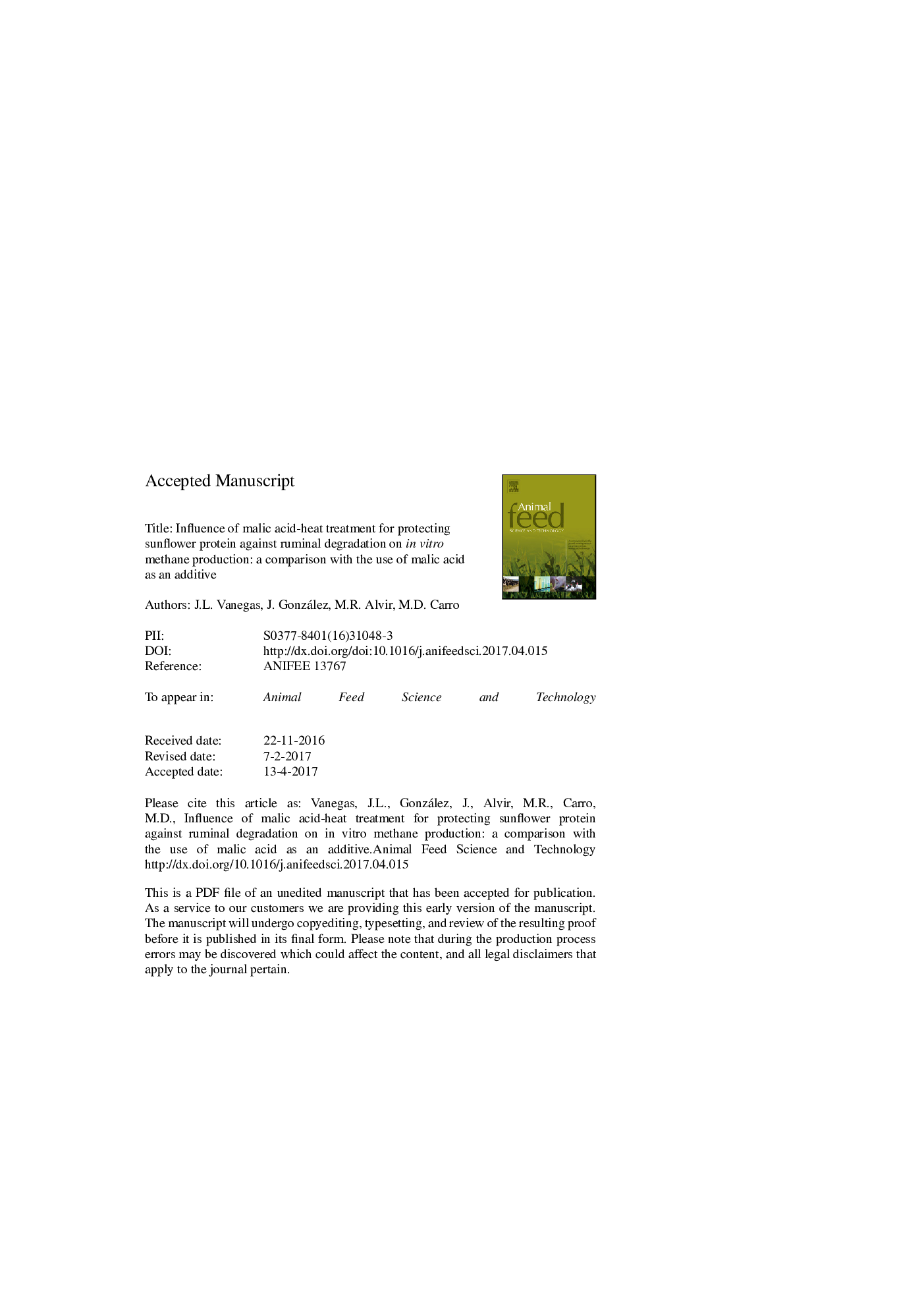| کد مقاله | کد نشریه | سال انتشار | مقاله انگلیسی | نسخه تمام متن |
|---|---|---|---|---|
| 5538910 | 1552358 | 2017 | 30 صفحه PDF | دانلود رایگان |
عنوان انگلیسی مقاله ISI
Influence of malic acid-heat treatment for protecting sunflower protein against ruminal degradation on in vitro methane production: A comparison with the use of malic acid as an additive
دانلود مقاله + سفارش ترجمه
دانلود مقاله ISI انگلیسی
رایگان برای ایرانیان
کلمات کلیدی
ADFomADLhigh-concentrate dietaNDFomVFADSMMAHNDIN - NdineADIN - آدینSunflower meal - آرد آفتابگردانMalic acid - اسید مالیکVolatile fatty acids - اسیدهای چرب فرارacid detergent fibre - الیاف پاک کننده اسیدHeat - حرارتSunflower seed - دانه آفتابگردانneutral detergent fibre - فیبر مواد شوینده خنثیacid detergent lignin - لیگنین پاک کننده اسیدdry matter - ماده خشکmalate - مالتMethane - متان body weight - وزن بدنUnT - کره
موضوعات مرتبط
علوم زیستی و بیوفناوری
علوم کشاورزی و بیولوژیک
علوم دامی و جانورشناسی
پیش نمایش صفحه اول مقاله

چکیده انگلیسی
Batch cultures of rumen microorganisms were used to compare the fermentation of sunflower seed (SS) and meal (SM) treated with malic acid and heat (MAH; 150 °C for 1 h) to protect the protein from ruminal degradation with that of the untreated samples supplemented the same amount of malate (as additive), either as free acid (MA) or disodium malate (DSM). As previous studies have shown the influence of donors' diet on in vitro fermentation, cultures were inoculated with ruminal fluid from four sheep fed a medium-concentrate diet (MC; 50:50 hay:concentrate) or a high-concentrate diet (HC; 15:85 barley straw:concentrate) in a cross-over experimental design. Cultures were sampled at 6 and 16.5 h of fermentation. In 16.5 h incubations, MAH treatment reduced (P < 0.001) CH4 production and ammonia-N concentrations for both substrates (by 60.3 and 45.3% for SS and by 23.7 and 17.2% for SM substrate, respectively). Whereas the MAH treatment reduced total volatile fatty (VFA) production by 16.5% for SS substrate, no effects were observed for SM substrate (P = 0.441). For both substrates, adding the same amount of MA to untreated samples (as a feed additive) resulted in greater CH4 production and ammonia-N concentrations compared with the MAH treatment. A positive relationship (P < 0.001) was observed between the concentrations of NH3N and CH4 production at both incubation times for both substrates. Compared with the untreated feeds, MA and DSM did not affect (P > 0.05) CH4 production for either substrate, but reduced ammonia-N concentrations (13.8%; P = 0.004) for SM substrate. Compared with DSM, MA treatment resulted in greater (P < 0.05) production of gas, butyrate, isovalerate and valerate and tended (P < 0.10) to greater total VFA, and propionate production for SS substrate at 6 h incubation, but most differences disappeared after 16.5 h incubation. For some fermentation parameters, the response to MAH treatment was more pronounced by using fluid from sheep fed the HC diet than that from MC-fed sheep. In conclusion, the MAH treatment was more effective at reducing CH4 emissions and NH3N concentrations than the supplementation of malic acid or disodium malate as a feed additive.
ناشر
Database: Elsevier - ScienceDirect (ساینس دایرکت)
Journal: Animal Feed Science and Technology - Volume 228, June 2017, Pages 123-131
Journal: Animal Feed Science and Technology - Volume 228, June 2017, Pages 123-131
نویسندگان
J.L. Vanegas, J. González, M.R. Alvir, M.D. Carro,